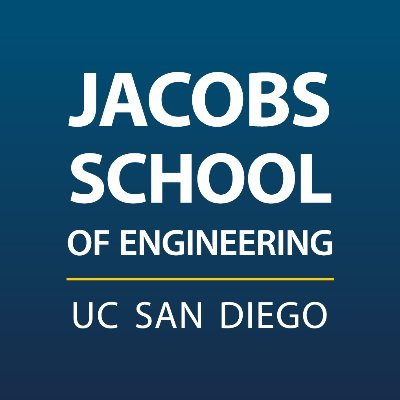News

October 1, 2013
Computer Scientists Develop New Approach to Sort Cells Up to 38 Times Faster
A team of engineers led by computer scientists at the University of California, San Diego, has developed a new approach that marries computer vision and hardware optimization to sort cells up to 38 times faster than is currently possible. The approach could be used for clinical diagnostics, stem cell characterization and other applications. Full Story

September 18, 2013
'Wildly Heterogeneous Genes'
Cancer tumors almost never share the exact same genetic mutations, a fact that has confounded scientific efforts to better categorize cancer types and develop more targeted, effective treatments. In a paper published in the September 15 advanced online edition of Nature Methods, researchers at the University of California, San Diego propose a new approach called network-based stratification (NBS), which identifies cancer subtypes not by the singular mutations of individual patients, but by how those mutations affect shared genetic networks or systems. Full Story

September 17, 2013
Bioengineers Researching Smart Cameras and Sensors that Mimic, Exceed Human Capability
University of California, San Diego bioengineering professor Gert Cauwenberghs has been selected by the National Science Foundation to take part in a five-year, multi-institutional, $10 million research project to develop a computer vision system that will approach or exceed the capabilities and efficiencies of human vision. Full Story

September 4, 2013
UC San Diego Bioengineering and IEM Programmer Named 2013 Presidential Innovation Fellow
Justin Grevich, a web developer and systems administrator in bioengineering and the Institute of Engineering in Medicine, has been named a 2013 Presidential Innovation Fellow. Full Story

August 12, 2013
New electron beam writer enables next-gen biomedical and information technologies
The new electron beam writer housed in the Nano3 cleanroom facility at the Qualcomm Institute is important for electrical engineering professor Shadi Dayeh’s two major areas of research. He is developing next-generation, nanoscale transistors for integrated electronics; and he is developing neural probes that have the capacity to extract electrical signals from individual brain cells and transmit the information to a prosthetic device or computer. Achieving this level of signal extraction or manipulation requires tiny sensors spaced very closely together for the highest resolution and signal acquisition. Enter the new electron beam writer. Full Story

July 29, 2013
Conference for African-American Researchers in Mathematics Connects Students to Mentors
For Lauren Crudup, a third-year bioengineering student at the University of California, San Diego, the Conference for African-American Researchers in the Mathematical Sciences (CAARMS) presented a unique opportunity to learn just how applicable mathematics is in the real-world—especially compared to the pure mathematics she learned in high school and earlier undergraduate courses. Full Story

June 27, 2013
Faculty Invited to Exclusive Symposium for 'Creative Young Engineers'
Jacobs School of Engineering professors Karen Christman and Gert Lanckriet are among 81 of the nation’s most “creative young engineers” selected to attend this year’s U.S. Frontiers of Engineering Symposium by the National Academy of Engineering. Participation in the event is by invitation-only to engineers between the ages of 30-45 who have “demonstrated accomplishment in engineering research and technical work with recognizable contributions to advancing the frontiers of engineering,” according to an NAE announcement. Full Story

June 21, 2013
Technology-Enhanced Learning: From Campus to the World
The academic landscape is changing rapidly, due in no small part to recent advances in technologies to enable, enhance and deliver teaching and learning to a worldwide audience. At the University of California, San Diego, administrators and faculty are particularly focused on using technology to transform the undergraduate learning experience (saving money in the process). They’re doing this in the context of the UC San Diego Education Initiative, as well as the Technology-Enhanced Learning (TEL) Initiative jump-started by Calit2’s Qualcomm Institute. Both programs are helping to formulate a way forward for the campus, with the Education Initiative focused on policy, and the TEL Initiative experimenting with various models of online learning. Full Story

June 6, 2013
Metabolic Model of E. coli Integrated with Protein Structures Reveals How Bacterial Growth Responds to Temperature Change
Bioengineers at the University of California, San Diego have developed a computational model of 1,366 genes in E. colithat includes 3D protein structures and has enabled them to compute the temperature sensitivity of the bacterium’s proteins. The study, published June 7 in the journal Science, opens the door for engineers to create heat-tolerant microbial strains for production of commodity chemicals, therapeutic proteins and other industrial applications. Full Story

May 31, 2013
Bioengineer Christian Metallo Selected as 2013 Searle Scholar and Hellman Faculty Fellow
University of California, San Diego bioengineering professor Christian Metallo has been named a 2013 Searle Scholar. He will receive $300,000 over the next three years to pursue his research on the role of oxygen availability in dictating how fat is produced and metabolized in the body. This work will provide therapeutic insights into metabolic diseases such as obesity. Metallo is one of just 15 young investigators across the United States selected from 176 applications submitted by 125 universities.Metallo is the first Searle Scholar representing the UC San Diego Jacobs School of Engineering. Full Story
